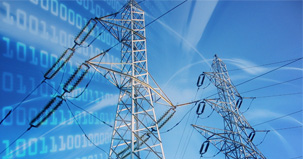- Home
- Smart Data
Smart Data
Actionable intelligence on energy and water use:
- Helps users identify inefficencies, and waste
- Provides real-time feedback on conservation
Right data for the right audience:
- Facility managers identify when and where energy is wasted
- CFO's can track and verify financial savings from initiatives
- Company knows its carbon and water footprint
Related Products
 Information any time, anywhere
Information any time, anywhere - Smart User
Smart User
Smart users leverage real-time data and reduce energy and water use by:
- Continuously identifying opportunities
- Acting on opportunities
- Tracking and verifying savings
- Sustaining savings
Related Products
 Monitor, Manage, Maintain
Monitor, Manage, Maintain - Smart Community
Smart Community
A smart community is one where all stakeholders are engaged in energy and water conservation. A smart community can be achieved by:
- Showing people precisely how much they are using
- Providing real-time feedback on conservation actions
- Effectively communicating efficiency results
Related Products
 Communicate and Conserve
Communicate and Conserve - Smart Grid
Smart Grid
Smart grid, as we define it, is a "green grid", with efficient resource use and the key to a low-carbon future. We help our customers prepare for the smart grid by:
- Engaging users with smart data
- Enabling smart users to increase resource efficiency
- Educating & empowering smart communities
Related Products
 Smart grid and a smarter future
Smart grid and a smarter future - Smart Buildings
Smart Buildings
Smart buildings maximize resource (energy, water, capital) efficiency. These buildings are optimized using energy and water management process with high data visibility which lead to reduced energy and water spending.
- Higher operating income and higher asset values for owners
- Increased productivity for occupants
- Lower carbon footprint for the community
 Resource efficient buildings
Resource efficient buildings
Subtitle!
Recent Posts
Phantom Power - A Huge Waste of Resources!
Turning things off doesn’t always turn things off.
Sure, most people nowadays try their best to be responsible – turning lights off when we leave a room, doing the same with the televisions. However, if you think that your appliances shut completely “off,” when the switch is turned off, you’d be wrong.
Think about it. Your T.V. is off, but the DVR and cable box are still going strong. The cordless phone isn’t in “use,” but it’s certainly will still be powered. Same thing goes with your computer, your printer, your coffee pot and myriad other appliances scattered throughout the house.
These are examples of the energy-wasting phenomenon called “phantom power,” or vampire energy. Simply put, this is the power that is used when electronic devices draw energy from the grid into your home just by being plugged in, when you aren’t looking and you aren’t using them.
The most likely culprits are appliances that can be operated with a remote control, or have power clocks or timers with miscellaneous LED status lights. The vampire power is consumed by power supplies (the black cubes—sometimes called “wall warts”—converting AC into DC) which have two teeth (the plugs) and “suck” electricity all day and night.
Phantom energy can account for about 10 percent of a residential home’s electricity use. It might not sound like much, until you consider that eliminating that 10 percent is like getting over a month of free electricity every year!
Standby power in commercial buildings is smaller but still significant. Altogether, standby power on a global scale is thought to be roughly responsible for one percent of global CO2 emissions.
Quick steps to combat phantom power can be as simple as unplugging your devices when they aren’t in use. But it can definitely be annoying to crawl behind the TV every time you finish watching it.
An easier way would be to use a power strip with a switch to control clusters of products. The most likely targets are computer clusters (PC, display, printer, scanner, speakers, wireless transmitter, etc.), video clusters (TV, DVD player, powered speakers, game consoles, etc.), and audio clusters (receiver, amplifier, CD players, etc.). Be sure to keep the set-top box and modem on a separate circuit to avoid any loss of connection.
When buying new electronics, check for low “stand-by” energy use; most Energy Star rated appliances have the lowest standby levels.
Many new technologies can improve the efficiency of power supplies, manage power use more carefully, and limit power use of displays. Experts believe that it is technically feasible to reduce standby power by 75 percent overall. Most savings will be less than a watt, but other cases could be as large as 10 watts.
By keeping phantom power levels low, home owners can really make a dent in their utility bills and improve energy conservation levels.